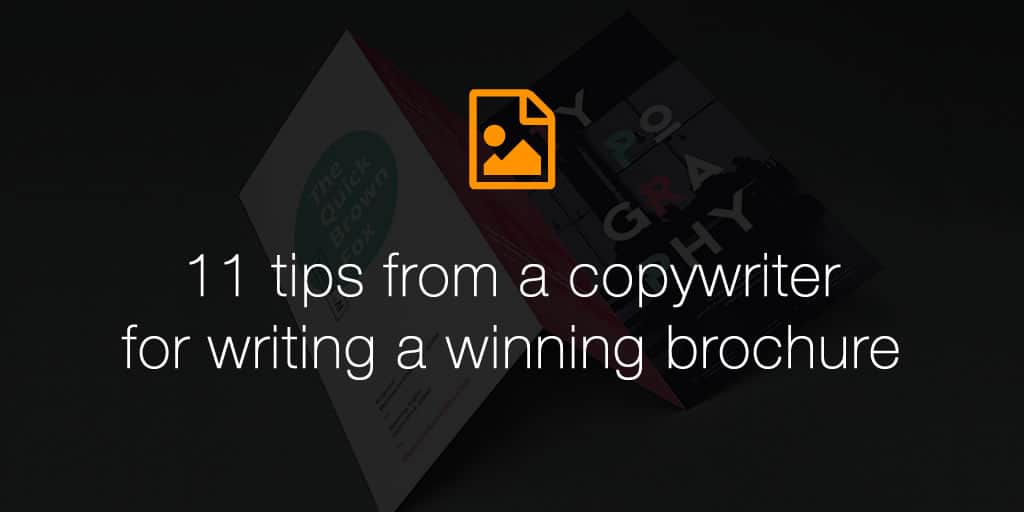
Brochures and flyers are often seen as “preparing the ground” for the sales harvest. But they can be expensive to produce and deliver, so they need to work well to be justified.
My advice to all clients is to consider it carefully before going ahead with anything of the sort. Ask yourself: do you really need a brochure at all? What are you trying to achieve?
1. Consider the alternatives
Which is going to be more cost-effective in the long run? Would a simple letter not suffice? A 1-page information sheet? What about email marketing? Some face-to-face meetings? Phone calls?
2. Be ready to hit the proverbial ‘send’ button
We tell clients not to start any work on the brochure itself until they have the envelopes ready, with address labels and stamps affixed. (We’ve seen one of the most expensive brochures ever produced in Ireland sitting in boxes in the corner of a client’s office, unused.)
3. Address your recipients by name
Make sure that you have them all in a well-organized database/spreadsheet, and most importantly that the address of each recipient is broken up into at least 3 fields – street, town/area & county/postcode.
You’ll also want the name of the right person in the company to send it to; no use using just the company name. Finally, it’s better to have the full name of the person than just their title/position in the company.
4. Always follow up!
There’s little or no point in sending out a brochure unless you plan to follow up on it. How else are you going to encourage the recipient on to the “next level” to becoming a client?
Don’t make the brochure do all the work on its own; it’s got to have a cover letter and a response mechanism. Some form of offer might be a good idea: reply to us by the end of the month and enter a draw for a year’s free subscription. And of course, each recipient should be in your OnePageCRM prospect list waiting to be upgraded to customer.
5. Costs vs. ROI
How many brochures do you need printed and how much are they going to cost you? Do you have the budget for it?
Don’t forget photography, graphic design, writing, envelopes, cover letter printing, stamps, phone calls organizing it, and the time you spend on it yourself. You’ll need a total investment cost in order to be able to evaluate return, later in the funnel.
6. Be distinctive
Carefully consider the format of the design and choose something that will attract the attention of your recipients. A4 is old reliable and perfect for most informative communications. Other formats aim to overcome the predictability of A4, to grab attention with the unusual, but they can distract and detract from a simple message.
7. Make an impression
Plain is fine for many communications, but steer clear of straying into cheap. The effects that unusual paper and treatments can bring about are well worth considering, depending on what impression you want the recipients to take away.
If you’re asking them to spend significant sums of money, you ought to be seen to be spending significant amounts of money. If you are asking them to believe in your attention to detail, you ought to be exhibiting an attention to detail in the brochure.
8. Be clear on content
Sit down with blank paper and start sorting out what you want to get across, and in what order. Eventually, staple a bunch of paper (say 4 sheets), and starting with the cover, see if you can figure out the best layout of the content.
9. Know your strengths
If you’re not great at writing, don’t stress yourself struggling with it; get a professional in to help, and what you’ll also get then is a fresh, outsider perspective on what you’re trying to achieve, which might just give you the insights you need to prevent wasting a lot of money achieving nothing but wasting time!
10. Shop and compare design agencies
Again, you want the recipients of the brochure, to perceive it and your business in turn as a high-value product. Don’t skimp on the final hurdle by employing low-quality craftsmen. Shop around for the best return within your budget and requirements.
11. Consider the truth of the saying
If you pay peanuts, you get monkeys!








